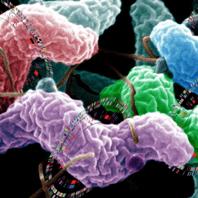Poultry pathogen resistant to antibiotic

Recent research reveals that poultry products contained Campylobacter jejuni, which had developed a resistance to the antibiotic ciprofloxacin, a synthetic antibiotic used by humans to fight bacterial infections.
The prevalence of Campylobacter – a major cause of foodborne illness – is common in raw poultry, with Campylobacter jejuni predominantly pathogenic to humans, reports Science Daily.
Researchers within the System Division of Agriculture at the University of Arkansas examined 392 raw chicken carcasses purchased from two Fayetteville grocery stores each week for nearly a year.
High levels of Campylobacter
It was discovered that 85% of the chicken purchased from one store had countable levels of Campylobacter, including non-pathogenic species, with 27% of it resistant to ciprofloxacin. At the second store, 46% of the carcasses had detectable levels of Campylobacter and 6% of them were resistant to the antibiotic.
Related to other antibiotics
Ramakrishna Nannapaneni, who conducted the research, said ciprofloxacin has never been used in animals. However, it is closely related to two other antibiotics, enrofloxacin and sarafloxacin, which were previously approved for usage in poultry between 1995 and 2000 before they were banned on 12 September, 2005.
“When Campylobacter became resistant to enrofloxacin or saraflo
xacin, it also showed cross-resistance to other fluoroquinolones (a group of antibiotics), such as in human medicine against ciprofloxacin,” he said.
Different levels of contamination
There was a difference in the levels of Campylobacter between the two stores and also the levels of resistance to ciprofloxacin. Nannapaneni believes this is possibly due to variations in packing and storage conditions at the two stores, or perhaps the difference in management of the poultry before harvesting.
“There is a clear need for monitoring the persistence and quantitative reduction of the total antibiotic-resistant Campylobacter loads in the food chain, particularly on raw animal food products, in efforts to control human campylobacteriosis,” Nannapaneni said.
Related link:













